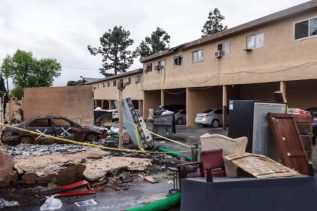The RR
As a Seller, be prepared to receive a Request for Repairs (RR) from the Buyer near the end of the physical contingency period during your transaction. Yes, the California Residential Purchase Agreement (RPA) has standard language in paragraph 11 that says, “the property is sold “AS IS” in its present physical condition as of the date of acceptance.” Despite this “AS IS” language, it’s very traditional for the Buyer and Seller to agree to a contingency period that allows the Buyer to complete any inspections and investigations he may want to execute. Frequently there will be a list of physical defects discovered about the condition of the property during these inspections. Don’t worry, every property has them. How to address the repair of these defects and costs associated with those repairs is where the RR comes in to play.
Repair vs. Upgrade
It is also especially important for the parties to understand the difference between a REPAIR vs. an UPGRADE. Building codes change all the time. Most homes have elements to them that don’t comply with current building codes. That does not mean those elements are not in perfect working order according to their intended use at the time they were built.
For example, a 1965 home may have been built with the balusters on the stairwell 6” apart. Current building codes call for them to be no more than 4” apart. Your home inspector may very well call his out as a “Safety Hazard”. Is it really? If the Buyer requests this condition be changed, it very well might be viewed as an upgrade vs. a repair and may not be considered a practical or reasonable request. I always tell my Buyer clients that the RR is an opportunity to address the true defects of a property and not a time to ask the seller to retrofit his entire home.
Seller’s Response
When you receive this Request for Repairs, the Buyer is going to be asking you to take corrective action to cure the defects that were discovered. Understand that you have a variety of possible responses at your disposal including;
- Accept – “Ok fine, we’ll fix everything.”
- Counter Offer – “We agree to fix certain items but not others”
- Credit in Lieu of Repairs – “We will offer you a financial credit but not take any corrective action.
- Rejection – “We do not agree to take any corrective action nor offer any credit”
WARNING : Many times have Buyer’s offered a high sale price (especially in a competitive Seller’s market) in an attempt to get your property under contract but without any intentions of closing the transaction at the agreed upon price. They will use the RR as a tool to try to renegotiate the price by asking for a disproportionately large credit compared to actual repair costs.
Your Realtor should go through the RR and any inspection reports that were provided by the Buyer side by side with you and be able to advise you about the reasonableness of the RR item and the cost associated with it. And when feasible, a good Realtor is going to lean towards giving his Seller client advice to offer a credit instead of taking any corrective action. Offering a credit is faster and won’t delay the transaction. It’s easier for the Seller to not have to hassle with contractors. And it shifts the liability of the quality of the work off the Seller and on to the Buyer. This is a much better option for you if it can be orchestrated.
- WARNING: If your Realtor has NO construction experience and is not well versed in this area, find another Realtor. It is critical for your Realtor to understand what truly is a physical defect or concern and what is not. Realtors often rely too much on the home inspector. Home inspectors inspect. To mitigate their own liability, they rarely make recommendations about what corrective action to take. An inexperienced Realtor can make mountains out of moles hills… and ruin the transaction. Or they can misunderstand the nature of “defect” and have you agree to unnecessary repairs.
The RR can be a major source of controversy if the Realtors do a poor job of managing their clients’ expectations or don’t know anything about construction and repair costs. The Seller should expect to make reasonable repairs. And the Buyer should not expect to have the entire house retrofitted according to all current building codes. Too many times have I seen other people’s transactions blows up over $5k or $10k of repairs on real estate transactions in the hundreds of thousands. That should NEVER happen. Keep things in perspective.
Suggestion
It’s a good idea to complete your seller’s disclosures and spend ~$500. to get your own inspection done before you list your property on the open market. By providing prospective buyers with disclosures and your inspection report before they even put in an offer, you give the Buyer a very good idea as to the current condition of the property and theoretically, they will submit a more well-thought out and informed offer.
By doing this, the “as is” language in the offer has more teeth. It becomes very difficult for a Buyer to argue the need for substantial repairs or credits if he already knows about them before submitting the offer. Presumably, that means the cost of any repairs should have already been reflected in the offer price.
Having inspections done in advance also allows the seller to take corrective action on anything that needs fixing before they go into escrow. If you find a leaky roof, you know a Buyer is going to want it fixed so making that repair in advance takes that negotiating point out of the equation. By contrast, if an inspector notes that a water heater is nearing the end of its useful life, the seller can simply inform potential buyers to factor this eventual water heater replacement into their offer.
Summary
- Execute the Seller disclosures and your own property inspection before you list your property.
- Take corrective action on items you know are going to be issues during the sale.
- Understand the various types of responses you can make to the RR.
- Offer a credit vs. taking corrective action whenever possible.
- Find a good, experienced Realtor with strong construction experience and/or knowledge and let him help guide you through this part of the process.












